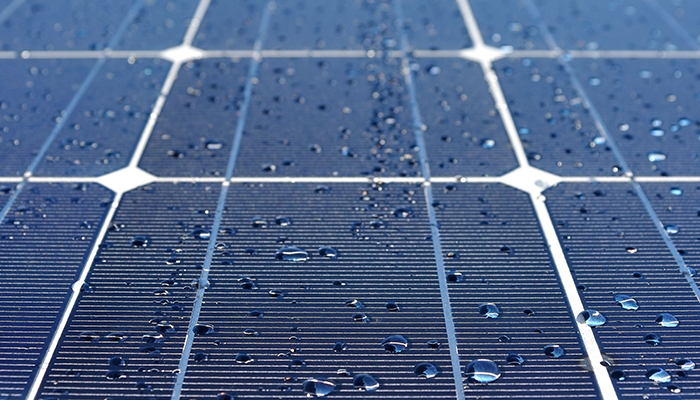All
Solar Power: Looking Beyond the Rooftops
by Ed Burke, Dennis K. Burke Inc.

We’ve all seen the rapid growth in solar installations over the past few years. We can also see how solar technology is evolving, and the applications just seem endless.
MIT scientists have come up with flexible photovoltaic cells that are so thin and lightweight, they can rest on top of soap bubbles without breaking them. Cells this thin and light could eventually be placed almost anywhere, from smart clothing to applications in aerospace technology, where weight is a crucial factor.
“It could be so light that you don’t even know it’s there,” said one of the MIT researchers. “These cells could simply be an add-on to existing structures.” The new process could be used to deposit solar cells on top of fabric, paper or almost any other material.
The MIT team says it’s the process, rather than the materials used, that makes the breakthrough so significant. The key to creating the new cell is the way the researchers have combined making the solar cell itself, the substrate that supports it, and its protective coating – all in one process. Fabrication takes place in a vacuum chamber at room temperature using vapor deposition techniques (where heat, pressure, and chemical reactions create a very thin coating of a material) to grow the substrate and the solar cell together.
The resulting ultra-thin and flexible cells are just one-fiftieth of the thickness of a human hair. That’s one-thousandth of the thickness of existing glass-based cells, but they can convert sunlight into electricity just as efficiently. The process is still in the proof-of-concept stage, and it will take a few more years to begin mass-producing them at scale.
Rain-or-Shine Panels
Scientists from the Ocean University of China are developing graphene solar panels that generate energy when it rains. Because raindrops contain various salts that split up into positive and negative ions, the team hopes to harness power via a simple chemical reaction. Specifically, they want to use graphene sheets to separate the positively charged ions in rain and generate electricity.
Early tests look promising. The team used a thin-film solar cell called a dye-sensitized solar cell, adding a layer of graphene to the cell. The resulting solar cell can generate power from both sunshine and rain. The project is still in the proof-of-concept phase, so it could be a while before we see them.
Mobile Solar Power
By helping fleet owners reduce idle time, emissions and fuel costs, solar power is poised for growth in the transportation industry. Onboard solar systems provide battery charging and power management for a wide range of trucking applications like telematics and safety systems. Larger systems are capable of powering lift gates, refrigeration units and climate control systems.
Drivers are able to stop anywhere and have a source for overnight power without idling. Refrigeration trucks can maintain temperatures without idling. Cycles of lift gate operation are significantly increased, with fewer battery issues on the end-of-day deliveries.
Floating Solar Panels
In many places where land space is scarce, floating solar arrays on top of lakes and reservoirs seem to be a sensible solution. Reservoirs are also ideal locations because the panels produce shade that reduces water evaporation, and since the solar array uses the water below to cool itself, it’s about 10 percent more energy-efficient than if it was built on land.
San Francisco’s Sunset Reservoir project, for example, consists of nearly 24,000 solar panels suspended over the reservoir. The project is one of the largest municipal solar arrays of its kind, and generates more than three times the energy generated from rooftop panels installed on the City’s municipal buildings.
Related Posts
 What’s Next in Boiler Technology
What’s Next in Boiler Technology
Posted on June 25, 2025
 Data Delivers!
Data Delivers!
Posted on April 28, 2025
 Harnessing Payment Data to Increase Profitability
Harnessing Payment Data to Increase Profitability
Posted on March 10, 2025
 DeepSeek Is Our AI Wake-Up Call
DeepSeek Is Our AI Wake-Up Call
Posted on March 10, 2025
Enter your email to receive important news and article updates.
